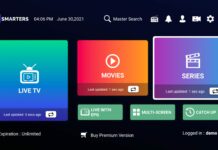
With smart tools reigning over the business industry, project and resource managers are training themselves to use automated technologies and better their efficiency. There are digitized solutions for core tasks like scheduling, collaborating with employees and certain other mundane tasks that take up a lot of your crucial time. However, in the wake of growing competition, the selection criteria for a new information system can have conflicting priorities or be remiss of the end-user’s intent; leading to buyer’s remorse in the long-run.
It shouldn’t come to a point where a product’s limitations make you regret purchasing it altogether. In order to utilize your project or resource management software to the best extent, beware of these 5 traps:
1. Software is not tailored to suit your needs
Imagine investing a hefty amount on a software only to know that you have to function according to it and not the other way round! It’s almost equivalent to putting in manual efforts to update data on excel sheets. To spare yourself this trouble, opt for a software that is highly configurable. Since expansion is synonymous to scalability, it’s imperative that your tool is customizable at no extra charge. It will help you build custom portals and incorporate your business architecture to align with your needs.
Moreover, the tool should facilitate self-serving configuration which reduces your dependency on the vendor you bought it from. This way, you have enough leeway to modify the software as and when your organization grows or scales up. It does not limit you to one-time use. Furthermore, it becomes user-friendly for all the employees across the office.
2. Does not facilitate integration of data
Having disparate tools for managing projects can be a task in itself. Switching tools while interpreting multiple reports and viewing schedules is inconvenient, and can cause you to lose track of information. Seamless integration of data on a centralized platform makes it easy for managers to maintain one single repository. A software that lets you merge your most critical enterprise suites with its open API is a right choice. You eliminate the drudgery of finding records to ratify and the chaos that comes with double data entry.
In addition, it can also offer you a data exchange framework that can communicate directly with multiple systems in multiple formats. So, if the software that you are buying does not facilitate integration, you are falling into the trap of spending a big chunk on hours of duplicity, extra manual efforts of switching between tools and what not!
3. Rigid dashboards
How useful will a software be if it does not have all the features you need? For instance, you are a freelancer and you are just required to submit your schedule and your assignment’s progress to your contractor. Instead of providing a simple template; your software intimidates you with the unnecessary you with all the extra reports. Would you want that? Well, that’s a rhetorical question! Same goes with project managers. Financial and budgeting reports, utilization reports and others are the fuel to their project. It’s of no use if your software isn’t flexible enough to provide you those.
To stay ahead of time and predict outcomes in advance, dashboards should load fast and display updates by how recent and rational they are. When a software is capable of displaying these reports in real-time and foretell resource inadequacies, managers can bridge the gap between capacity and demand and shift project attributes such that project margin does not go down. Rigid dashboards on the other hand, delay decisions by disabling access to the users by their roles or worse, creating an information overload which makes searching for the right data a nightmare!
Hence a software with rigid dashboards is a complete no! In order to make the most of your software and achieve the efficiency and accuracy while managing projects, ensure that your software adjusts to your necessities.
4. Slow data processing
Technology is meant to automate and reduce manual efforts. When considering investing in a project planning or a resource planning software, the aim is to get real-time information about the project’s progress, task status, project financials and other attributes. If you have a tool that lags and there’s a delay in data processing, it will create silos. Besides this, collaboration with the workforce will be hindered and exchange of necessary information across the enterprise would become difficult.
Hence ensuring that your tool has a fast and prompt data-processing system is necessary to streamline project planning and make data-driven decisions. Not only that, regardless of the number of users working simultaneously at any given time, the screens should load quickly and provide information access according to the type of licenses. Typical, premium versions of software give you complete access to enterprise data, while lighter versions contain basic functionalities and previews with a lockdown until you opt to upgrade.
5. Cost does not align with the value
Smart tools come with a hefty price. The question being, can your budget stretch to extract strategic use out of the tool? When making an investment in these tools, one must ensure that upfront costs align with its value. Certain provisions are important for a software to have as they decide your ability to stick to the roadmap drafted. For example, if you require a license for a project manager, resource manager and your resources, you need not pay for each of these separately. One-time payment should have it all without incurring any additional costs.
When in future, your organization grows further, scaling-up your software accordingly should be free of charge. If a software does not meet those criteria, it’s not the right choice for you. Buying a software is a one-time decision and one-time investment that has to be made wisely.
The takeaway
As of now, there is no such thing as a bug-free software. However, getting value out of what you paid for is a question of the scalability of the features and which ones are most relevant to the department wishing to migrate on to it. Besides the points mentioned above, several other attributes like degree of accuracy of forecasted reports, staying proactive with forewarned outcomes will make your software even more stronger and strengthen your project management cycle.
Artificial intelligence and business analytics have disrupted the business industry with several smart software that have facilitated self-regulation of mundane tasks, enhanced team collaboration and has contributed towards the productivity and performance of employees helping you deliver better results to the clients. Make sure you pick the right software for your business model to evolve sustainably!











